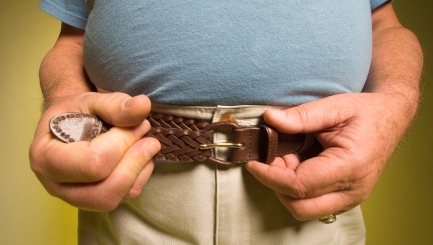What Do You Know About Belly Fat?
 No one likes that little bit of extra fat, especially in the belly area. The truth is, for your wellbeing, your body does need some fat but did you know that there is some fat you have that you can’t even see?
No one likes that little bit of extra fat, especially in the belly area. The truth is, for your wellbeing, your body does need some fat but did you know that there is some fat you have that you can’t even see?
You store most of your fat in 2 ways; there’s the subcutaneous fat that you notice just under the skin in the thighs, hips, buttocks, and abdomen, and the visceral fat which you can’t see as it lives deeper inside you, around the vital organs. Visceral fat provides necessary cushioning around organs, but when there’s too much of it your wellness is at risk to developing high blood pressure, type 2 diabetes, heart disease, dementia, and certain cancers.
But how do you develop too much visceral fat? According to Carol Shively, PhD, professor of pathology-comparative medicine at Wake Forest School of Medicine, apart from alcoholism, ‘obesity increasing [means] you have people whose fat depots are so full that the fat is deposited into the organs’.
There’s a simple way you can find out if you have too much fat. Measure your waist, or girth, with a measuring tape whilst standing, making sure the tape is level. Healthy men have a 40 inch waist or less, whilst healthy women have less than a 35 inch waist. According to Kristen Hairston, MD, assistant professor of endocrinology and metabolism at Wake Forest School of Medicine, ‘What we’re really pointing to with the apple versus pear is that if you have more abdominal fat, it’s probably an indicator that you have more visceral fat’. However, for genetic reasons, or reasons of inactivity, skinny people can likewise have more visceral fat than they should.
Therefore, the four keys to controlling belly fat are exercise, diet, sleep, and stress management. Half an hour of vigorous aerobic exercise, such as jogging or walking briskly, done four times a week trims all types of fat and slows down the build-up of visceral fat that tends to happen over the years. However, any little activity can help ‘Rake leaves, walk, garden, go to Zumba, play soccer with your kids. It doesn’t have to be in the gym’ Hairston says. When it comes to diet, Hairston’s research shows that people who eat 10 grams of soluble fibre per day, such as two small apples, a cup of green peas, and a half-cup of pinto beans, for example, without any other diet changes, build up less visceral fat over time than others.
Finally, getting enough sleep is part of the picture (6-7 hours) that combats visceral fat and taming stress stops you from overeating. Shively recommends that you get social support meditate, and exercise to handle stress. She also says ‘If you could only afford the time to do one of these things, exercise probably has the most immediate benefits, because it hits both obesity and stress response’ but remember to consult a physician before beginning any vigorous exercise programme.


Comments are closed.